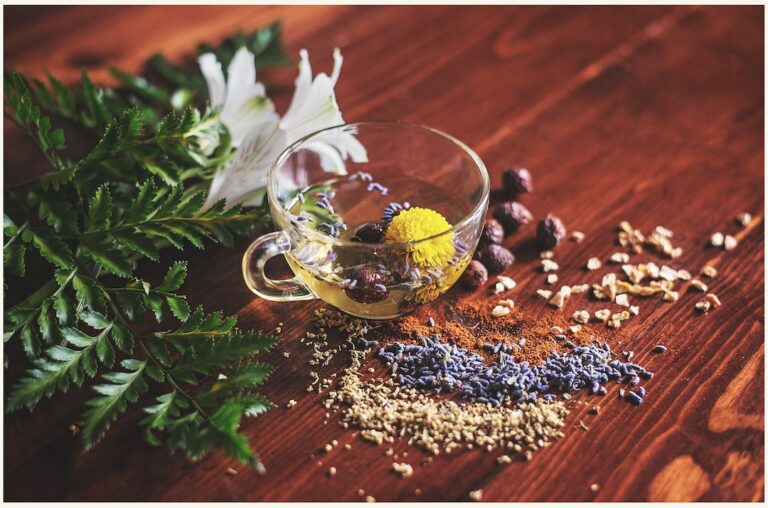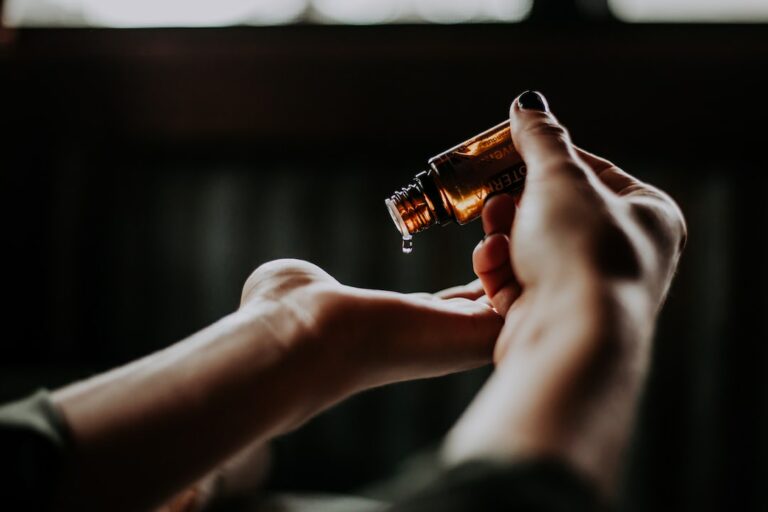Introduction
Definition of herbal doctors
Herbal doctors, also known as herbalists, are practitioners who specialize in the use of medicinal herbs for treating various health conditions. They have a deep understanding of the properties and benefits of different herbs and how they can be used to promote healing and well-being. Herbal doctors often combine traditional knowledge with modern scientific research to develop personalized treatment plans for their patients. By harnessing the power of nature, herbal doctors offer natural alternatives to conventional medicine, providing individuals with a holistic approach to healthcare.
History of herbal medicine
Herbal medicine has a rich and fascinating history that spans thousands of years. The practice of using plants and botanicals for medicinal purposes can be traced back to ancient civilizations such as the Egyptians, Greeks, and Chinese. These cultures recognized the healing properties of various herbs and developed sophisticated systems of herbal medicine. Throughout history, herbal medicine has played a crucial role in treating a wide range of ailments and promoting overall wellness. Today, herbal medicine continues to be a popular alternative to conventional medicine, with many people seeking natural remedies for their health concerns. One area of particular interest is mercury detox tips, which provide valuable insights into how herbal medicine can support the body’s natural detoxification processes. By incorporating specific herbs and botanicals into their daily routine, individuals can promote the elimination of toxins, support liver function, and enhance overall well-being.
Popularity of herbal medicine
Herbal medicine has gained significant popularity in recent years, with more and more people turning to natural remedies for their health concerns. One particular aspect of herbal medicine that has captured the attention of many is the numerous benefits of herbal teas. These teas, made from various plants and herbs, offer a range of health benefits that can improve overall well-being. From boosting the immune system to aiding digestion, herbal teas have become a go-to option for those seeking a natural and holistic approach to their health. The benefits of herbal teas are vast and varied, making them a popular choice among individuals looking for alternative ways to support their health and wellness.
Training and Education

Types of training for herbal doctors
There are various types of training available for herbal doctors. These trainings provide the necessary knowledge and skills required to practice herbal medicine effectively. One type of training is formal education, which includes studying herbal medicine in accredited institutions. This involves learning about the different herbs, their properties, and the various methods of preparing and administering them. Another type of training is apprenticeship, where aspiring herbal doctors learn from experienced practitioners. This hands-on training allows them to observe and participate in real-life herbal medicine practices. Additionally, there are online courses and workshops that provide flexible learning options for individuals interested in becoming herbal doctors. These trainings cover topics such as herbal remedies, plant identification, and holistic health. By undergoing these types of training, herbal doctors gain the expertise needed to provide effective and safe herbal treatments to their patients.
Certification and licensing
Certification and licensing play a crucial role in determining the authenticity and credibility of herbal doctors. These professionals undergo rigorous training and education to acquire the necessary knowledge and skills in the field of herbal medicine. By obtaining the required certifications and licenses, herbal doctors demonstrate their commitment to upholding high standards of practice and ensuring the safety and well-being of their patients. This ensures that they are well-equipped to provide accurate diagnoses, develop appropriate treatment plans, and offer reliable advice on herbal remedies. With certification and licensing, herbal doctors gain recognition as legitimate healthcare practitioners, earning the trust and confidence of both the medical community and the general public.
Continuing education
Continuing education plays a crucial role in the field of herbal medicine. As the demand for alternative and natural remedies continues to grow, it is important for herbal doctors to stay up-to-date with the latest research, techniques, and advancements in the field. By participating in continuing education programs, herbal doctors can enhance their knowledge and skills, ensuring that they provide the best possible care to their patients. These programs cover a wide range of topics, including herbal pharmacology, plant identification, clinical applications, and safety considerations. Through ongoing learning, herbal doctors can confidently navigate the complexities of herbal medicine and offer evidence-based treatments. By staying informed and educated, herbal doctors can maintain their credibility and uphold the standards of their profession.
Role and Responsibilities

Consultations and assessments
Consultations and assessments are an essential part of the herbal doctor’s practice. During consultations, patients have the opportunity to discuss their health concerns and goals with the herbal doctor. These sessions allow the herbal doctor to gather important information about the patient’s medical history, lifestyle, and current symptoms. Assessments are then conducted to evaluate the patient’s overall health and identify any imbalances or deficiencies. By combining the information gathered during consultations and assessments, the herbal doctor can develop personalized treatment plans tailored to each patient’s unique needs and goals.
Prescribing herbal remedies
Herbal doctors, also known as herbalists, are practitioners who specialize in prescribing herbal remedies. These professionals have extensive knowledge of medicinal plants and their therapeutic properties. They carefully select and combine herbs to create personalized treatment plans for their patients. Herbal doctors take into consideration the individual’s health condition, medical history, and specific needs when prescribing herbal remedies. The use of herbal medicine dates back thousands of years and is rooted in traditional healing practices from various cultures around the world. Herbal doctors play a crucial role in providing alternative and complementary healthcare options to individuals seeking natural remedies for their ailments.
Monitoring and follow-up
Monitoring and follow-up are essential aspects of herbal medicine. After a patient has received treatment from a herbal doctor, it is important to regularly monitor their progress and ensure that the prescribed remedies are working effectively. This involves tracking any changes in symptoms, evaluating the overall health improvements, and addressing any concerns or questions that may arise. Additionally, follow-up appointments allow the herbal doctor to make any necessary adjustments to the treatment plan and provide ongoing support and guidance. By closely monitoring and following up with patients, herbal doctors can ensure the best possible outcomes and optimize the effectiveness of herbal medicine.
Effectiveness of Herbal Medicine

Scientific evidence
Naturopaths are practitioners of natural medicine who focus on holistic healing and prevention. They utilize a combination of traditional and modern therapies, including herbal medicine, nutrition, and lifestyle counseling. Naturopaths aim to address the root cause of illness and promote overall wellness. Scientific evidence suggests that naturopathic treatments can be effective in managing certain health conditions, such as chronic pain, digestive disorders, and stress-related ailments. However, it is important to note that the effectiveness of naturopathic treatments may vary depending on individual cases. Therefore, it is recommended to consult with a qualified naturopath to determine the most suitable treatment approach for specific health concerns.
Case studies and testimonials
Case studies and testimonials provide valuable insights into the effectiveness of herbal doctors. One of the most intriguing findings is the discovery of the strongest herb. This powerful herb has shown remarkable results in treating various ailments and has gained recognition in the medical community. Numerous case studies have documented the positive impact of this herb on patients’ health, highlighting its potential as a natural remedy. Testimonials from individuals who have experienced the benefits of this herb further validate its effectiveness. By incorporating the strongest herb into their treatment plans, herbal doctors are able to offer patients a holistic approach to healing.
Potential risks and side effects
Herbal doctors, also known as traditional healers or herbalists, have been practicing for centuries and are believed to have extensive knowledge of natural remedies and plants. While many people turn to herbal doctors for alternative treatments and holistic approaches to health, it is important to be aware of potential risks and side effects. Although herbal medicine is generally considered safe, there are instances where it may interact with other medications or cause adverse reactions. It is crucial to consult with a qualified healthcare professional before starting any herbal treatment to ensure its safety and effectiveness. Additionally, it is important to note that not all herbal doctors are certified or regulated, which can pose a risk to individuals seeking their services. Therefore, it is essential to research and choose a reputable herbal doctor who is knowledgeable and experienced in herbal medicine.
Integration with Conventional Medicine

Collaboration with medical doctors
Collaboration between herbal doctors and medical doctors is crucial in providing comprehensive healthcare. While herbal doctors specialize in traditional remedies and natural healing methods, medical doctors bring their expertise in diagnosing and treating medical conditions. This collaboration allows for a holistic approach to patient care, combining the benefits of both traditional and modern medicine. One area of collaboration is the use of traditional European spices, which have been used for centuries for their medicinal properties. These spices, such as turmeric, ginger, and cinnamon, have shown promising results in managing various health conditions. By working together, herbal doctors and medical doctors can harness the power of traditional remedies and modern medicine to improve patient outcomes.
Potential benefits of integration
Herbal doctors, also known as herbalists, have been practicing alternative medicine for centuries. They utilize plants and plant extracts to treat various health conditions. While the effectiveness of herbal medicine is still a subject of debate, there are potential benefits to integrating herbal doctors into mainstream healthcare. One of the main advantages is the holistic approach that herbal doctors take towards health. They consider the individual as a whole, taking into account physical, mental, and emotional well-being. This comprehensive approach can lead to a more personalized and patient-centered care. Additionally, herbal medicine often focuses on prevention rather than just treatment. By promoting healthy lifestyle choices and natural remedies, herbal doctors can help individuals maintain optimal health and prevent the onset of diseases. It is important to note that integrating herbal doctors into mainstream healthcare requires careful regulation and collaboration with conventional medical practitioners. However, with proper training and oversight, herbal doctors can contribute to a more comprehensive and inclusive healthcare system.
Challenges and limitations
Herbal medicine has gained popularity in recent years as an alternative form of healthcare. However, there are several challenges and limitations associated with herbal doctors. One of the main challenges is the lack of scientific evidence to support the effectiveness of herbal remedies. While traditional herbal medicine has been used for centuries, there is a need for more rigorous research to validate its claims. Additionally, the regulation and standardization of herbal medicine vary widely across different countries, making it difficult to ensure the quality and safety of herbal products. Another limitation is the potential for herb-drug interactions, as some herbal remedies may interact with prescription medications. It is important for individuals considering herbal medicine to consult with a qualified healthcare professional to ensure safe and effective use. Despite these challenges and limitations, herbal medicine continues to be a popular choice for many individuals seeking natural remedies.
FAQ (Frequently Asked Questions)
What conditions can herbal doctors treat?
Herbal doctors are practitioners who specialize in using natural remedies to treat various health conditions. They have extensive knowledge of herbal medicine and its benefits. When it comes to infections, herbal doctors can provide effective solutions through the use of natural remedies. These remedies are derived from plants and have been used for centuries to combat infections. Natural remedies for infection include herbs such as garlic, echinacea, and oregano oil, which have antimicrobial properties. By incorporating these natural remedies into their treatment plans, herbal doctors can help individuals strengthen their immune system and fight off infections. If you are looking for alternative options to conventional medicine, herbal doctors can offer a holistic approach that focuses on the body’s natural healing abilities.
Are herbal remedies safe?
Herbal remedies have been used for centuries as a natural alternative to traditional medicine. Many people are drawn to these remedies because they are believed to be safe and effective. However, it is important to ask the question: Are herbal remedies really safe? While some herbal remedies have been proven to be beneficial, it is important to remember that not all herbs are created equal. It is essential to do thorough research and consult with a healthcare professional before using any herbal remedy. One popular herb that has gained attention in recent years is [popular herb](https://www.example.com/popular-herb). This herb is known for its various health benefits and has been used for centuries in traditional medicine. However, it is important to use caution when using any herbal remedy, as they can have side effects and interact with other medications. It is always best to consult with a healthcare professional before incorporating herbal remedies into your healthcare routine.
How long does it take to see results with herbal medicine?
Herbal medicine has been used for centuries as a natural alternative to traditional medicine. Many people are curious about the effectiveness of herbal medicine and wonder how long it takes to see results. The answer to this question can vary depending on the individual and the specific condition being treated. In general, herbal medicine works by supporting the body’s natural healing processes and addressing the root causes of illness. This holistic approach takes time, as it focuses on restoring balance and promoting overall well-being. It is important to note that herbal medicine is not a quick fix, but rather a long-term solution that encourages the body to heal itself. To fully experience the benefits of herbal medicine, it is recommended to follow a treatment plan and be patient with the process. By incorporating herbal remedies into your healthcare routine, you can join the natural medicine series and take an active role in your own health and wellness.






































